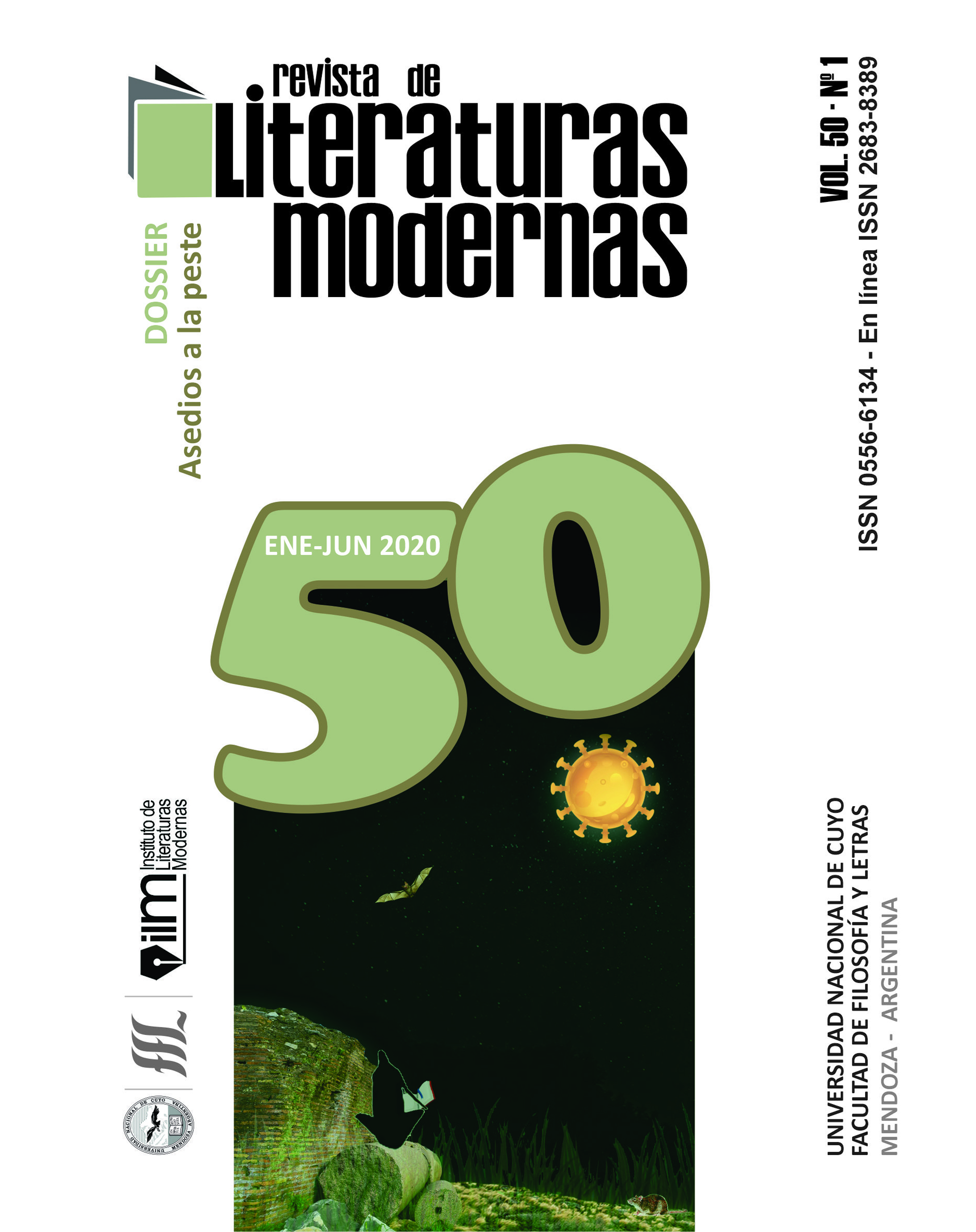The Leveling Plague: Epigram 241 of Antipater of Sidon in Greek Anthology Book 7
Keywords:
Greek Anthology, Antipater of Sidon, II A.D, Pandemic, EgyptAbstract
This article briefly explains the scope of the epigrammatic genre and, through personal translation of the original Greek source and its comparison with Latin, English, Spanish and Italian versions, analyzes epigram 241 by Antipater of Sidon, in book 7 of the Greek Anthology, after contextualizing it by referring to its author and the genesis of the poem. The methodology to apply is based on philological and historical criticism, involving three successive complementary stages, appropriate to the nature of this literary genre: investigation of the historical-cultural context, textual and philological analysis and hermeneutic study, with some etymological notes at the bottom of the page/ with some etymological notes as footnotes. Since all artistic representation also testifies to the historical context in which the piece of art was created, the hypothesis that guides the study of the epigram is the leveling effect of the plague, which does not distinguish among its victims: it brings together the powerful and the humble, the pharaohs and their subjects, the healthy and the sick and the strong and the weak, and it affects a particular member of the family instead of a different member and people of all ages without distinction. In fact, the conception underlying the hypothesis represents an assumption, as it goes beyond the writer’s aim of poignantly reflecting the deep pain/sorrow experienced by Ptolemy VI Philometor and his sister Cleopatra II upon the death of one of their children.
Downloads
References
Cameron, Alan, TRAD. 1993. The Greek Anthology from Meleager to Planudes. Oxford: Clarendon Press.
Conca, Fabrizio; Marzi, Mario; Zanetto, Giuseppe. 2005. Antologia Palatina: Volume primo. Libri I-VII. Torino: Unione Tipografico-Editrice Torinese.
Diehl, Ernestus, COMP. 1949-52. Anthologia Lyrica Graeca. Leipzig: Teubner.
Dübner, Fred. 1927. Epigrammatum Anthologia Palatina, cum Planudeis et appendice nova, Volumen primum. Paris: Ambrosio Firmin-Didot et Sociis. Versión digitalizada en < https://archive.org/stream/epigrammatumanth01grotuoft#page/n7/ mode/2up>
Fernández-Galiano, Manuel, TRAD. 1978. Antología Palatina I: Epigramas helenísticos. Madrid: Gredos.
Gutzwiller, Kathryn J., TRAD. 1998. Poetic Garlands. Hellenistic Epigrams in Context. Berkeley-Los Angeles-Boston: University of California Press.
Paton, William Roger, ED. 1956-1958. The Greek Anthology (Vol. 2). Harvard: Harvard University Press. Edición bilingüe.
Secundarias
Daremberg, Charles Víctor. TRAD. 1879. Å’uvres de Rufus D’ Éphèsus. 1879. Paris: L’ Imprimerie Nationale. Digitalizado por Marc Szwajcer. En línea: http://remacle.org/bloodwolf/ erudits/rufus/fragments.htm#_ftn28
Pérez Jiménez, A. TRAD. 1983. Hesíodo. Obras y fragmentos. Madrid: Gredos. Schrader, Carlos. TRAD. 2010. Heródoto. Historia. Libros I y II. Madrid: Gredos.
Bibliografía consultada
Gozalbes Cravioto, Enrique; García García, Inmaculada. 2013. "Una aproximación a las pestes y epidemias en la antigüedad", Espacio, Tiempo y Forma, Serie II, Historia Antigua, t. 26, 63-82. En línea: http://revistas.uned.es/index.php/ ETFII/article/viewFile/13738/12424>
Hatem, Mohamed Elkorani. 2000. Tipología del epigrama funerario helenístico. Murcia: Universidad de Murcia. En línea: https://dialnet.unirioja.es/servlet/tesis? codigo=160841>
Scaramella, Dora G. (1997). "Los hápax en la literatura", Revista de Estudios Clásicos, nº. 26, 119-
129. En línea: https://bdigital.uncu.edu.ar/12384








